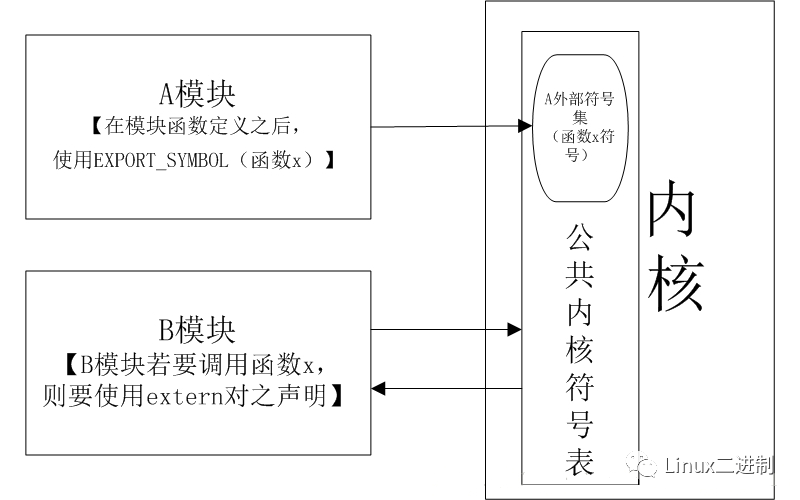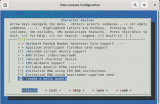一、模塊使用計數的背景知識
模塊是一種可以在內核運行過程中動態加載、卸載的內核功能組件。2.6內核中模塊的命名方式為*.ko。模塊在被使用時,是不允許被卸載的。編程時需要用“使用計數”來描述模塊是否在被使用。
二、2.4內核使用計數的實現方法
2.4內核中,模塊自身通過 MOD_INC_USE_COUNT, MOD_DEC_USE_COUNT宏來管理自己被使用的計數。通常我們在寫模塊時,會在open方法中加入MOD_INC_USE_COUNT,在close方法中加入MOD_DEC_USE_COUNT來實現使用計數。
三、2.6內核使用計數的實現方法
2.6內核提供了更健壯、靈活的模塊計數管理接口 try_module_get(&module), module_put(&module)取代2.4中的模塊使用計數管理宏。模塊的使用計數不必由自身管理,而且在管理模塊使用計數時考慮到SMP與PREEMPT機制的影響(參考module.h中try_module_get和module.c中module_put的實現)。
int try_module_get(struct module *module); 用于增加模塊使用計數;若返回為0,表示調用失敗,希望使用的模塊沒有被加載或正在被卸載中。
void module_put(struct module *module); 減少模塊使用計數。
try_module_get與module_put 的引入與使用與2.6內核下的設備模型密切相關。2.6內核為不同類型的設備定義了struct module *owner 域,用來指向管理此設備的模塊。如字符設備的定義:
struct cdev
{
struct kobject kobj;
struct module *owner;
struct file_operations *ops;
struct list_head list;
dev_t dev;
unsigned int count;
};
struct file_operations {
struct module *owner;
loff_t (*llseek) (struct file *, loff_t, int);
ssize_t (*read) (struct file *, char __user *, size_t, loff_t *);
ssize_t (*write) (struct file *, const char __user *, size_t, loff_t *);
……
};
從設備使用的角度出發,當需要打開、開始使用某個設備時,使用 try_module_get(dev-》owner)去增加管理此設備的 owner模塊的使用計數;當關閉、不再使用此設備時,使用module_put(dev-》owner)減少對管理此設備的owner模塊的使用計數。這樣,當設備在使用時,管理此設備的模塊就不能被卸載;只有設備不再使用時模塊才能被卸載。
2.6內核下,對于為具體設備寫驅動的開發人員而言,基本無需使用 try_module_get與module_put,因為此時開發人員所寫的驅動通常為支持某具體設備的owner模塊,對此設備owner模塊的計數管理由內核里更底層的代碼如總線驅動或是此類設備共用的核心模塊來實現,從而簡化了設備驅動開發。
四、舉例說明2.6內核模塊使用計數的實現過程
舉一個2.6內核下字符設備驅動編寫的例子來說明問題。在2.6內核下編寫一個設備驅動時,初始化過程中大家都會看到如下的模板:
static struct file_operations simple_remap_ops = {
.owner = THIS_MODULE,
.open = simple_open,
……
};
static void simple_setup_cdev(struct cdev *dev, int minor,
struct file_operations *fops)
{
int err, devno = MKDEV(simple_major, minor);
cdev_init(dev, fops);
dev-》owner = THIS_MODULE;
err = cdev_add (dev, devno, 1);
/* Fail gracefully if need be */
if (err)
printk (KERN_NOTICE “Error %d adding simple%d”, err, minor);
}
無論是cdev還是file_operations都將自己的struct module *owner成員指向了THIS_MODULE。那么這個THIS_MODULE 是什么呢?
內核源碼目錄下include/linux/module.h
#ifdef MODULE
#define MODULE_GENERIC_TABLE(gtype,name) /
extern const struct gtype##_id __mod_##gtype##_table /
__attribute__ ((unused, alias(__stringify(name))))
extern struct module __this_module;
#define THIS_MODULE (&__this_module)
#else /* !MODULE */
#define MODULE_GENERIC_TABLE(gtype,name)
#define THIS_MODULE ((struct module *)0)
#endif
__this_module這個符號是在加載到內核后才產生的。insmod命令執行后,會調用kernel/module.c里的一個系統調用 sys_init_module,它會調用load_module函數,將用戶空間傳入的整個內核模塊文件創建成一個內核模塊,并返回一個struct module結構體,從此,內核中便以這個結構體代表這個內核模塊。THIS_MODULE類似進程的CURRENT。
struct module
{……
struct module_ref ref[NR_CPUS];
}
struct module_ref
{
local_t count;//記錄模塊使用計數
} ____cacheline_aligned;
現在咱們就看看內核是如何幫助我們完成使用計數的。
在2.4內核中,我們是通過在open方法中增加引用計數,在close方法中減少引用計數。在2.6內核中,內核肯定也是要在open、close時幫助我們實現同樣功能的。
打開字符設備的大體流程如下:
sys_open()-》do_sys_open()-》do_filp_open()-》nameidata_to_filp() -》__dentry_open()-》chrdev_open()-》open()
2.6內核中并不要求模塊在open中顯示的實現使用計數,真正使用模塊使用計數是在chrdev_open()中完成的。
內核源碼fs/char_dev.c
static int chrdev_open(struct inode *inode, struct file *filp)
{
struct cdev *p;
……
cdev_get(p); //增加cdev中owner指向的module的使用計數
……
filp-》f_op = fops_get(p-》ops);}// 增加file_operations中owner指向的module的使用計數
if (filp-》f_op-》open) {
lock_kernel();
ret = filp-》f_op-》open(inode,filp);//調用到設備驅動中的open
unlock_kernel();
}
}
static struct kobject *cdev_get(struct cdev *p)
{
struct module *owner = p-》owner;
……
if (owner && !try_module_get(owner))
return NULL;
……
}
內核源碼Include/linux/fs.h
#define fops_get(fops) /
(((fops) && try_module_get((fops)-》owner) ? (fops) : NULL))
關閉設備的大體流程
sys_close()-》filp_close()-》fput()-》__fput()-》release()
2.6內核中并不要求模塊在release中顯示的實現使用計數,真正使用模塊使用計數是在__fput()中完成的。
void __fput(struct file *file)
{
struct dentry *dentry = file-》f_path.dentry;
struct vfsmount *mnt = file-》f_path.mnt;
struct inode *inode = dentry-》d_inode;
if (file-》f_op && file-》f_op-》release)
file-》f_op-》release(inode, file);//調用到設備驅動中的release
……
cdev_put(inode-》i_cdev); //減少cdev中owner指向的module的使用計數
……
fops_put(file-》f_op);// 減少file_operations中owner指向的module的使用計數
……
}
 電子發燒友App
電子發燒友App


























評論